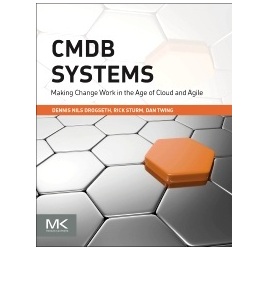EMA is about to embark on some new research entitled Data-Driven Automation: A Vision for the Modern CIO. To do this, I'm working with our COO, Dan Twing, who has been tracking automation avidly over the last several years from what might be called "the other side of the automation ocean." Dan's focus has centered in the growing strategic role of workload automation far beyond basic job scheduling and the rise of Robotic Process Automation in both business and IT use. Whereas mine has focused just about everywhere else, from all forms of workflow, to IT process automation (or runbook), to configuration automation, and in particular the handshake between automation and AIOps.
Together, we're trying to piece a puzzle together that so far we don't believe anyone to date has fully done — seek out where and how IT is moving toward integrated strategies for automation in context with real-world objectives and obstacles. We'll be looking at four use cases, each of will no doubt tell its own story:
■ Incident, Problem and Availability Management
■ Configuration, Change and Capacity Management
■ DevOps
■ Application Performance and Workload Optimization
To be clear, most of what the world thinks of as "performance management" will be focused in use case number one, while the last use case will center in orchestrating automation for batch processing and workloads for application performance.
From this we'll be seeking to get a better feeling for "automation best practices." We'll even be developing a four-stage maturity model based on the realities that the data exposes, including different role perceptions. We'll also be drawing on our combined experience in EMA's IT consulting practice with lessons learned about how technology impacts IT organizations, and vice versa.
Questions Asked
While each of our four use cases is different, we'll be asking many common questions across them. These include but are not limited to:
■ How far along are IT organizations in automation adoption? To what degree are they beginning to move beyond ad-hoc, use-case-specifics and more strategic integrations?
■ What IT automation technologies are most prevalent in deployment, which are most prioritized, and which are most lacking? Which are most likely to be relied upon for a more unified, strategic approach?
■ What are IT organizations looking for in making future automation investments and why?
■ What is the impact of AIOps and other analytics on automation, as in the titled theme of the research "data-driven IT automation?" How far along are IT organizations with the analytics-automation handshake and where do they see that handshake going in the coming years?
■ Who are current automation deployments serving in terms of stakeholders, management and executives across IT and beyond? Who are they most critically failing to serve?
■ How are trends such as digital transformation (on the business side) and cloud migration, microservices and containers (on the technical landscape side) impacting IT automation adoptions?
■ What are the salient obstacles in IT automation adoption both in terms of use case and more generally?
■ What are the most salient benefits per use case, and what benefits emerge when more strategic integrations across use cases occur?
■ What separates out IT organizations that are more forward looking in terms of automation adoption in terms of processes, best practices, organizational models, attitudes and other factors?
A Litany of Specifics
What are we really talking about when it gets down to automation adoption? To give you a flavor, I thought I'd share our list for incident, problem and availability management automation:
■ Automated event remediation
■ Alert-driven notification
■ Automation in support of incident team communication
■ Integrated trouble ticketing
■ Runbook or IT process automation
■ AI bots
■ Virtual agents
■ Workload automation
■ Robotic process automation
■ Workflow within and across IT
■ Workflow combined with social IT
■ Workflow in support of partner/service provider interdependencies
■ Core service desk workflows
■ Automation in support of infrastructure inventory and discovery
■ Automation in support of application discovery and dependency mapping
■ Security-related process automation (and/or playbooks)
■ Security instrumentation (continuous attack testing and defense stack validation)
■ Automation in support of endpoint inventory/discovery
■ Automation in support of data assimilation and reconciliation
By the way, we know the list might not be complete. Happy to get your thoughts there. Needless to say, each use case includes different specifics, but many are also repeats, such as workflow and runbook. For various reasons, we're also tracking workload automation across use cases, as in recent years we've observed it becoming a more multi-purpose automation orchestrator.
What We're Hoping to See
We view this research as timely, but also somewhat ahead of its time. Neither Dan nor I expect to see fully coordinated automation integrations across all four use cases driven strongly by integrated analytics. But we are hoping to see an evolving set of trends that can lead to a more strategic approach, as use-case values begin to blend and reinforce each other.
With that I promise two things. The first is to share the highlights with you once our analyses are done in late March or early April. The second is to welcome your thoughts, perspectives and opinions. You can reach me, as always, at drogseth@emausa.com

